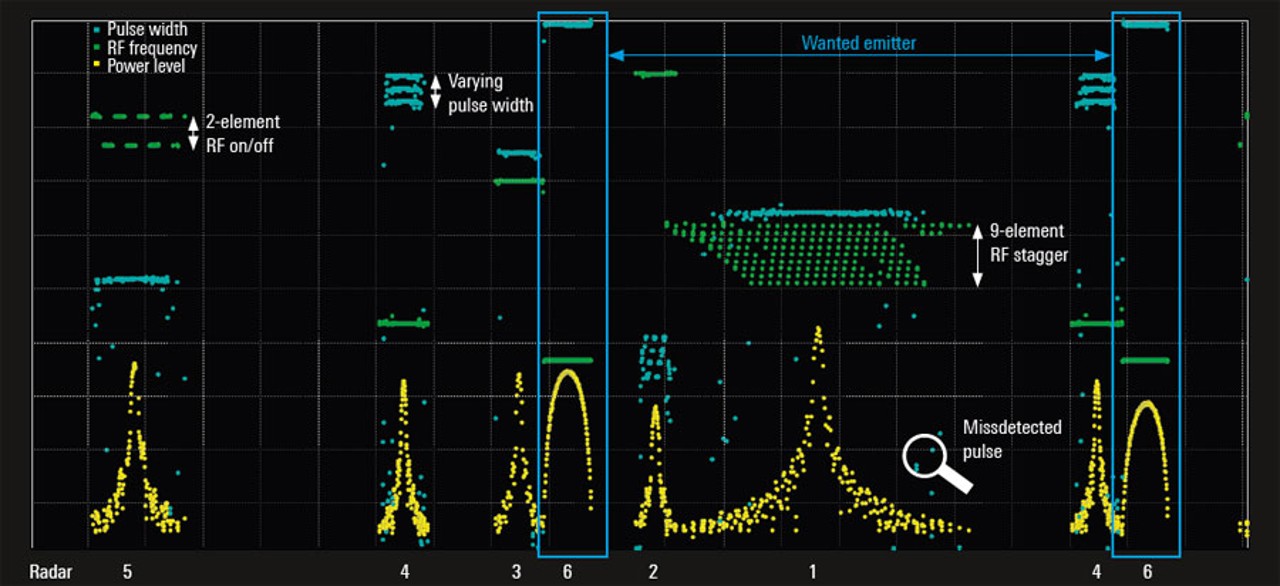T&M solution
In order to simulate multi-emitter scenarios, engineers use the R&S®SMW200A vector signal generator together with the R&S®Pulse Sequencer software. With the R&S®SMW-K306 multiple emitters option installed, the R&S®SMW200A turns into a powerful and modern radar signal simulator for EW receiver tests. Engineers now have a handy tool and a perfect alternative to large simulators for the complete development cycle of EW receivers. It prevents delays, design rework and perfectly balances cost with performance. Radar engineers can use the R&S®Pulse Sequencer software to create lists of radar emitters (see table). The R&S®Pulse Sequencer software simulates multiple emitter signals and combines them into a single output file, using an optimized, priority-based and smart interleaving algorithm. The benefits are:
- Simple, customized configuration of up to 256 emitters
- Optimize and preview interleaving results thanks to priority schemes and offset parameters
- Interleave emitters that use I/Q modulated pulses or inter-pulse modulation profiles such as PRI stagger, RF stagger and any kind of antenna scan type or antenna patterns
- Interleave emitters that switch modes over time
- Import and interleave PDW lists
Create emitters with interpulse modulation and MOP
Radars have characteristic signatures, such as staggered or randomly varying pulse repetition intervals (PRI) or staggered RF frequencies (frequency hopping). Pulses can have modulation MOP, e.g. with linear frequency modulation. Especially low probability of intercept (LPI) radars use MOP and benefit from pulse compression gain in order to decrease the radiated power per pulse. The more complex, agile and advanced emitter signatures are, the more difficult it becomes for EW receivers to detect them among a mix of many other emitters. The R&S®Pulse Sequencer software can simulate all the characteristics listed above for multi-emitter scenarios. In the example test case used here, the scenario consists of six different (1 to 6) radars listed in the table. In this test case, the EW receiver has to detect the land-based early warning radar (radar 6) installed near the coastline within the mix of active commercial navigation radars (radars 1 to 5).







